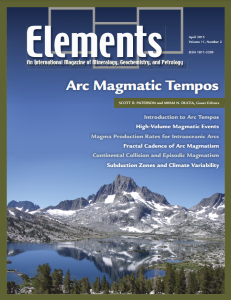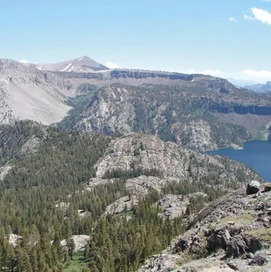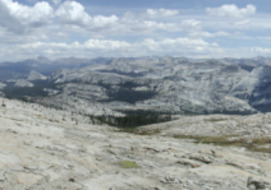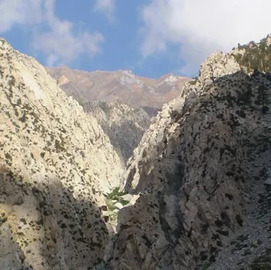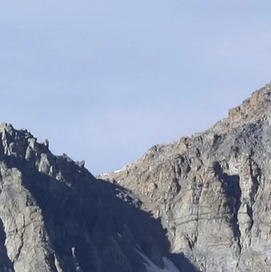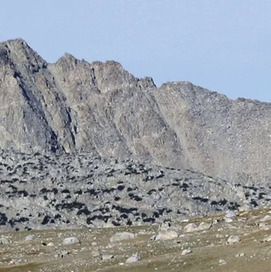
Arc Magmatic Tempos
Scott R. Paterson and Mihai N. Ducea – Guest Editors
Table of Contents
Research over the past decade has established that magmatism in oce- anic and continental arcs is not temporally or spatially steady-state. The causes of well-documented order of magnitude increases in magmatic production over relatively short-lived, high-volume events remain con- troversial. Since the differentiation of our planet and formation of the continental crust and its underlying mantle lithosphere is in large part the result of magmatic processes at convergent margins, it is imperative that we understand the underlying controls on the tempo of magmatic and tectonic activity in arcs and the episodic nature of magmatism. These processes also influence socially important processes such as long-term climate change, volcanic and fault hazards, and ore deposi- tion. This issue will provide an overview of some recently developed models for episodic behavior in subduction magmatism, from global to single magmatic systems, and explore the causes of high-volume events in subduction-related magmas.
Arc Magmatic Tempos: Gathering the Evidence
High-Volume Magmatic Events in Subduction Systems
Magma Production Rates for Intraoceanic Arcs
Quickening the Pulse: Fractal Tempos in Continental Arc Magmatism
Collisional Processes and Links to Episodic Changes in Subduction Zones
Global Continental Arc Flare-ups and Their Relation to Long-Term Greenhouse Conditions
AHF Analysentechnik
Analytical Instrument Systems, Inc.
Australian Scientific Instruments (ASI)
Bruker Nano
Cambridge University Press
Cameca
Excalibur Mineral Corporation
Geochemist’s Workbench
JEOL
ProtoXRD
Rocks & Minerals
Savillex
Wiley
Zeiss
v11n3 Apatite: A Mineral for All Seasons
Guest editor: Daniel E. Harlov (GeoForschungsZentrum, Potsdam) and John F. Rakovan (Miami University)
At the intersection of the biological, geological, and materials science realms, the topic of apatite is highly diverse and interdisciplinary. Apatite-group minerals are the dominant phosphates in the geosphere and biosphere. They are found in virtually all rock types as the principal sink for phosphorus and fluorine, and in many cases yttrium and the rare earth elements. They form the major mineral component in verte- brate bones and are the base of the global phosphorus cycle. The isotope chemistry of U, Th, and Pb in apatite has led to their broad application in geochronology. Last, the physical and chemical properties of apatite- group minerals make them ideal for many technological applications, including phosphors, lasers, prosthetics, ceramics, metal sequestration agents, and potential solid nuclear waste forms. This issue of Elements presents cutting-edge research on apatite with regard to (1) geochemical investigations on crustal and mantle processes on Earth, (2) biological processes, (3) practical applications in industry, and (4) geochemical processes in extraterrestrial environments.
- Structurally Robust, Chemically Diverse: Apatite and Apatite Supergroup Minerals John M. Hughes (University of Vermont) and John F. Rakovan (Miami University)
- Apatite: A Fingerprint for Metasomatic Processes Daniel E. Harlov (GeoForschungsZentrum, Potsdam)
- Magmatic Apatite: A Powerful, Yet Deceptive, Mineral James D. Webster (American Museum of Natural History) and Philip M. Piccoli (University of Maryland)
- Extraterrestrial Apatite: Planetary Geochemistry to Astrobiology Francis M. McCubbin and Rhian H. Jones (University of New Mexico)
- Geochronology and Thermochronology Using Apatite: Time and Temperature, Lower Crust to Surface David M. Chew (Trinity College, Dublin) and Richard A. Spikings (University of Geneva)
- A Technological Gem: Materials, Medical, and Environmental Mineralogy of Apatite John F. Rakovan (Miami University) and Jill D. Pasteris (Washington University, St. Louis)
- Mineralogy of Mars (February 2015)
- Arc Magmatic Tempos (April 2015)
- Apatite (June 2015)
- Societal and Economic Impacts of Geochemistry (August 2015)
- Supergene Metal Deposits (October 2015)
- Geomicrobiology and Microbial Geochemistry (December 2015)
Download 2015 Thematic Preview


